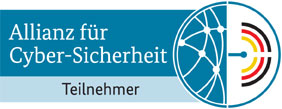AI vs. (secure) software developers
I think the entire software development world saw NVIDIA’s CEO saying that the world will stop needing software developers, because they will be replaced by AI.
Well, considering that this comes from the guy who sells the core on which AI is built, is understandable.
But is there any truth to this? Let’s look at some Strengths and Weaknesses of AI in the field of software development, with focus on secure software development.
The Strengths of AI in Software Development
AI excels in automating repetitive tasks and processing vast amounts of data quickly. For example, AI-driven tools can:
- Identify common vulnerabilities such as SQL injection or cross-site scripting (XSS) using pattern recognition.
- Suggest code refactoring for improved efficiency or readability.
- Provide automated testing and validation for specific use cases.
- Generate code snippets that can speed up development, allowing developers to focus on complex, high-level tasks instead of repetitive tasks.
- Perform static and dynamic code analysis faster than manual reviews, identifying potential issues across large codebases in a fraction of the time.
- Offer predictive insights by analyzing historical data to anticipate possible security breaches or performance bottlenecks.
- Facilitate compliance checks by mapping code against security standards and regulatory requirements.
These capabilities make AI invaluable for enhancing productivity and reducing the burden of mundane tasks. However, AI has limitations that highlight the irreplaceable role of skilled developers.
The Weaknesses of AI in Secure Software Development
- Lack of context understanding
AI tools often struggle to grasp the context of a software system. Security vulnerabilities often stem from contextual issues, such as improper assumptions about user behavior or architectural flaws.
Developers use their domain knowledge and intuition to identify these issues—something AI cannot replicate. - Overreliance on patterns
AI relies heavily on training data and pattern recognition. This approach can lead to false positives (flagging issues that aren’t real) and false negatives (missing actual vulnerabilities).
Developers, on the other hand, use critical thinking to assess risks and prioritize fixes. - Lack of creative problem-solving
Secure software development often requires innovative solutions to unique problems.
AI lacks the creativity and adaptability of humans, limiting its ability to design custom security measures. - Ethical and legal implications
AI cannot make ethical decisions or assess the broader implications of its suggestions.
Developers with security expertise consider regulatory compliance, ethical concerns, and long-term impact when designing secure systems. - Lack of continuous growth
Unlike developers, whose experience grows continuously through exposure to new challenges, AI systems remain static unless explicitly retrained.
Developers improve their skills, adapt to emerging threats, and learn from past experiences, ensuring they stay ahead of evolving security risks. - Limited problem-solving scope
AI knows only what it was trained with. This limitation means it struggles to address new or unconventional problems that fall outside its training data.
Developers, by contrast, use their ingenuity and evolving expertise to find innovative solutions to emerging threats and challenges.
Examples of AI Mistakes
Here are some scenarios where AI is not mature enough, and developers with security skills excel:
- Misidentifying Threats: An AI tool might flag a harmless API endpoint as a potential security risk due to pattern similarity, while missing a nuanced logic flaw that allows privilege escalation.
- Overlooking Complex Dependencies: AI might fail to account for security risks in intricate dependency chains or third-party integrations, where a developer’s experience would highlight potential issues.
- Generic Recommendations: AI might suggest generic fixes that do not align with the specific architecture or threat model of the application, whereas developers tailor solutions to the system’s needs.
- Failing to Detect Zero-Day Vulnerabilities: AI cannot identify vulnerabilities that do not have a pre-existing pattern in its training data. Developers’ intuition and expertise are critical for detecting these novel threats.
- Incorrectly Prioritizing Vulnerabilities: AI might prioritize fixing minor issues over addressing critical risks, leading to inefficient resource allocation. Developers can apply risk-based decision-making to prioritize effectively.
- Overlooking Business Logic Flaws: AI often fails to detect flaws in the business logic that attackers can exploit. These vulnerabilities require a deep understanding of the application’s purpose and workflows, which developers possess.
- Inappropriate Code Suggestions: AI-generated code snippets may inadvertently introduce vulnerabilities or fail to comply with specific security policies. Developers review and adapt these snippets to ensure secure integration.
- Old or obsolete training data: AI recommends very often snippets of code based on old APIs, which might no longer exist by the time it is asked to generate some code. Developers will look always at the latest documentation of the API they need.
Instead of conclusions
AI is a powerful tool that enhances the capabilities of developers but, as can be seen above, it does not replace them. At least for a long while … 
The ideal approach is a collaborative one, where AI handles repetitive tasks and provides data-driven insights, allowing developers to focus on high-level problem-solving and decision-making.
Organizations should invest in both AI tools and the continuous development of their teams’ security skills.
This balanced approach ensures that the software remains secure, reliable, and resilient against threats.
The post AI vs. (secure) software developers first appeared on Sorin Mustaca on Cybersecurity.


